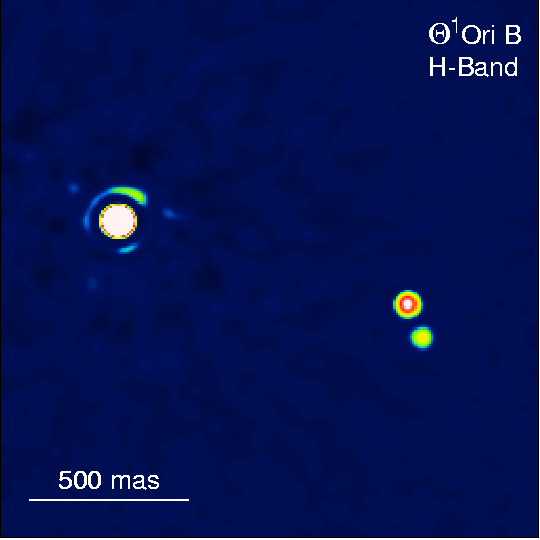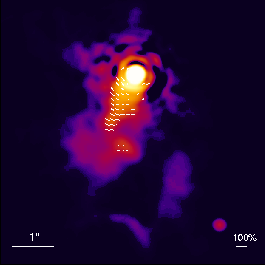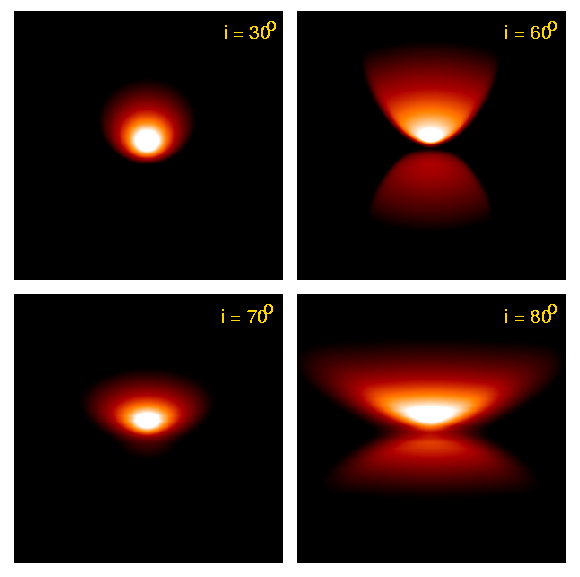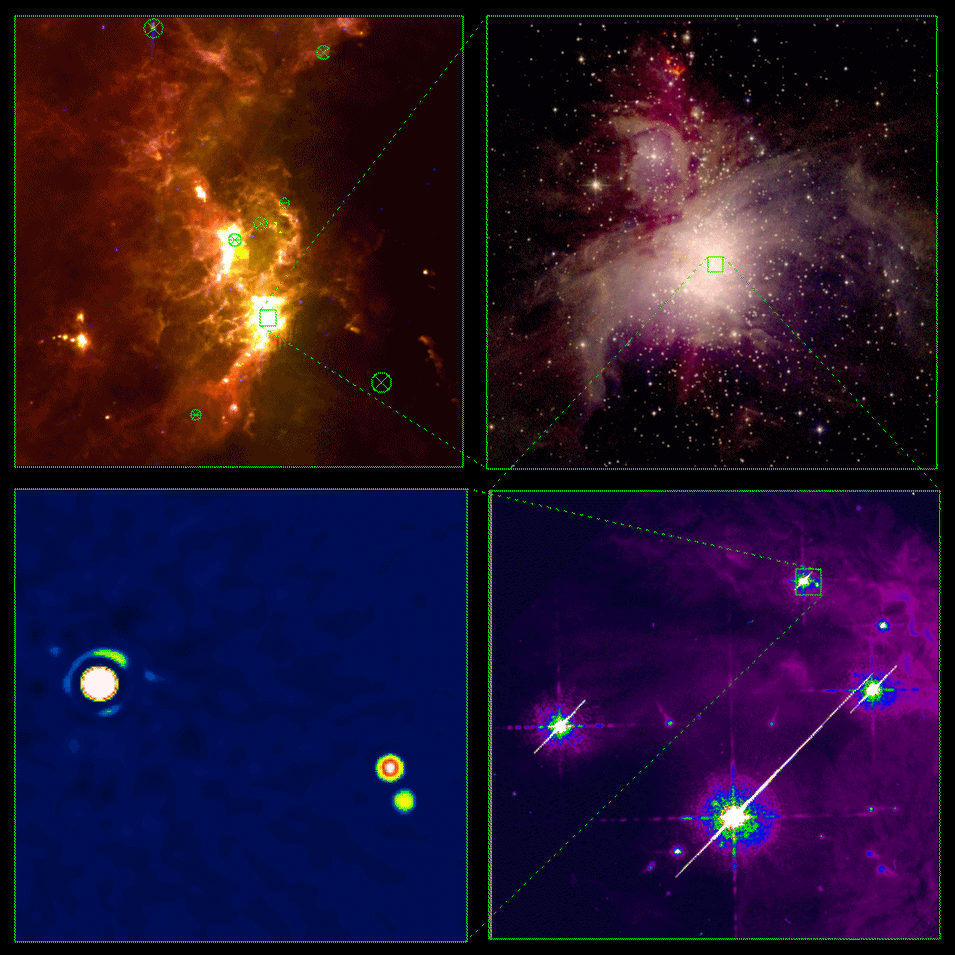





High spatial resolution often is a key factor towards an improved understanding of young stellar objects and the star formation process. High spatial resolution is essential for the study of
Therefore, our research on young stellar objects is focused on the following main topics:
The star formation process involves an enornous range of physical scales, from whole molecular cloud complexes with sizes of some hundred parsecs (10^21 cm), to individual stars with sizes of only some solar radii (10^11 cm). Understanding the very complex process of star formation thus requires observations at very different spatial scales. The below mosaic of four images demonstrates this at the example of the Orion star forming region. The mosaic shows a sequence of closer and closer looks towards the center of this region.
The upper left image shows an
IRAS
true color image of
the Orion molecular cloud complex, covering an area of 20 times 20
degrees.
(160 times 160 parsecs).
The green encircled asterisks mark the position of the optically
brightest
stars which form the well known constellation Orion.
The densest part of the molecular cloud complex slightly below the
center
of the image contains the famous Orion nebula.
The upper right image shows a near-infrared image of the Orion nebula
cluster
(from the
Two Micron All Sky Survey ). This cluster contains several hundred
young stars with typical ages of about 1 million years. The nebula is
illuminated by the strong radiation of the massive young stars in the
cluster center.
The lower right image shows the Trapezium system, i.e.~the system of the
most massive and luminous stars at the center of the Orion nebula
cluster
(optical image created from
Hubble Space Telescope
archive data).
Finally, the lower left image shows our near-infrared high-resolution
bispectrum speckle interferometry image (field of
view 1.6
times 1.6 arcsec)
of one of the Trapezium stars, which can be seen to be
a triple star. Since the field of view of our image is
1.6 times 1.6 arcsec, its image scale is 45 000 times larger than that
of
the upper left image showing the full molecular cloud complex.
